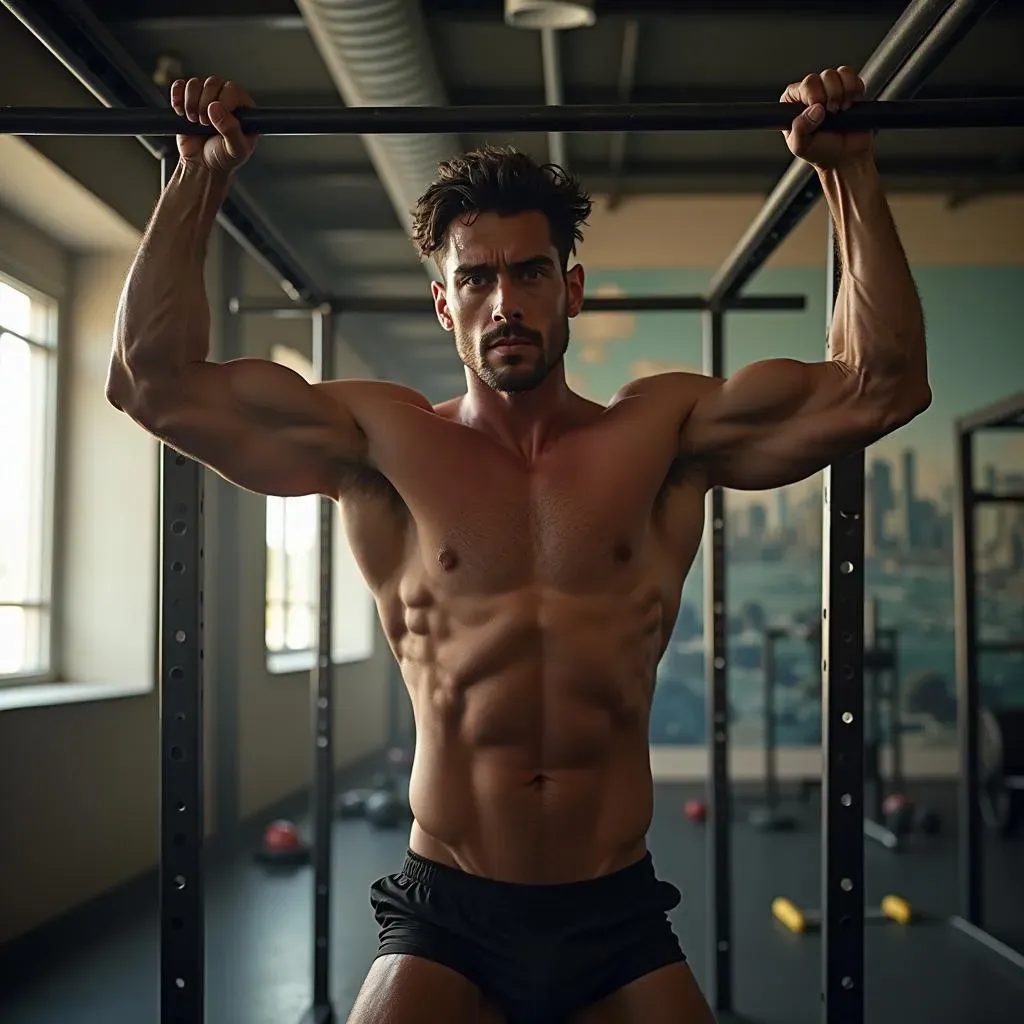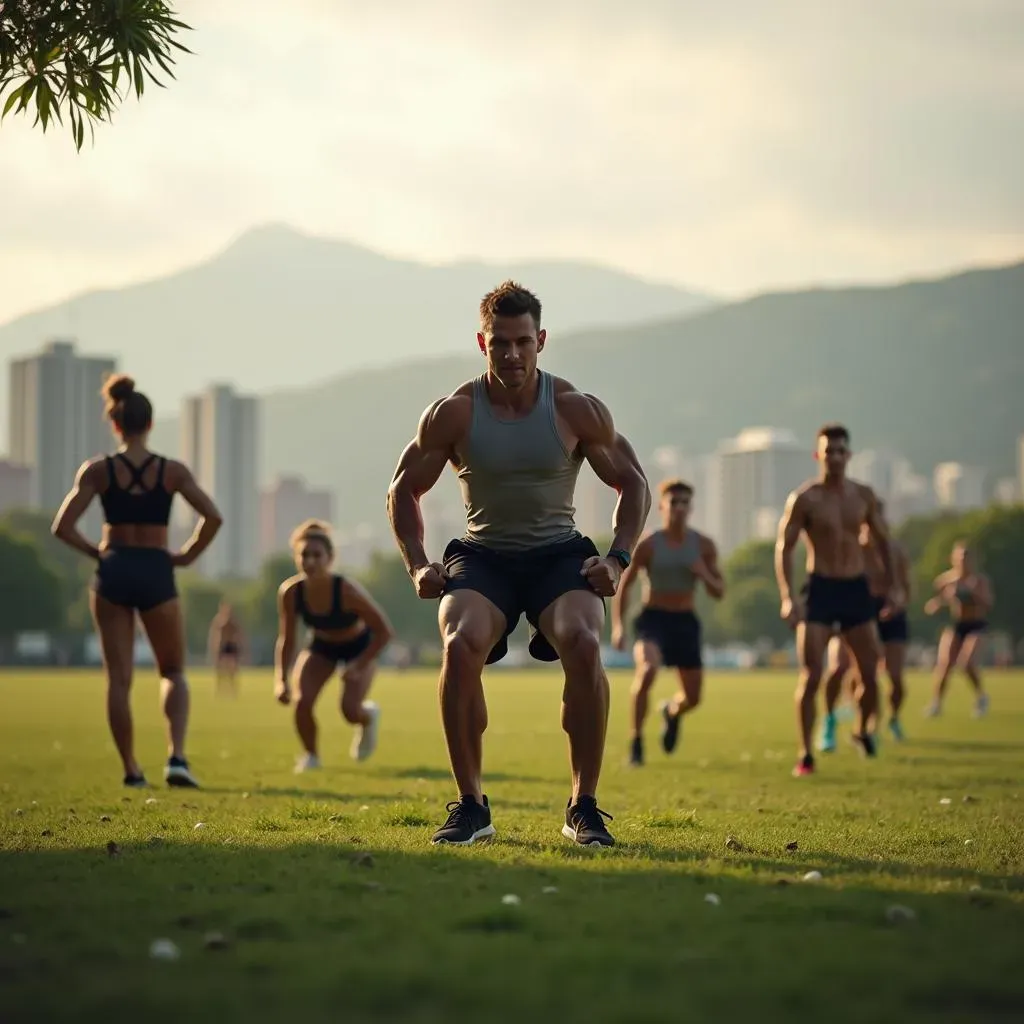Table of Contents
Are you ready to embark on a journey to improved physical fitness and strength? Look no further than calisthenics, a form of exercise that uses your body weight as resistance to build muscle and boost overall health. If you're wondering how to start calisthenics, you're in the right place. This comprehensive guide will walk you through the basics of calisthenics, helping you understand the benefits, create a workout routine, and choose the right equipment to get started. Whether you're a fitness enthusiast or just beginning your journey, calisthenics is an accessible and effective way to achieve your goals. In this article, we'll delve into the world of calisthenics, providing you with the knowledge and tools necessary to begin your transformation. So, let's dive in and explore how to start calisthenics, from the fundamentals to advanced techniques, and discover a stronger, healthier you.
Getting Started with Calisthenics: Understanding the Basics

Getting Started with Calisthenics: Understanding the Basics
What is Calisthenics and Its Benefits
Calisthenics is a form of exercise that uses body weight as resistance to build strength, flexibility, and coordination. It's a great way to improve overall fitness without the need for expensive gym equipment. Calisthenics workouts can be done anywhere, whether at home, in a park, or even in a small apartment. The benefits of calisthenics include increased strength, improved balance, and enhanced cardiovascular health. By incorporating calisthenics into your fitness routine, you can expect to see significant improvements in your overall physical fitness.
One of the most significant advantages of calisthenics is its accessibility. You don't need any special equipment or a large space to get started. All you need is your own body weight and a willingness to learn. Calisthenics exercises, such as push-ups, squats, lunges, and planks, are simple yet effective. They work multiple muscle groups simultaneously, making them an efficient way to build strength and endurance.
Exercise | Muscle Group | Benefits |
|---|---|---|
Push-ups | Chest, shoulders, triceps | Improves upper body strength |
Squats | Legs, glutes, core | Builds leg strength and improves balance |
Plank | Core, shoulders, back | Enhances core strength and improves posture |
Getting Started with Calisthenics: Tips for Beginners
Starting a new exercise routine can be intimidating, but with calisthenics, it's easier than you think. Begin by choosing exercises that fit your fitness level and goals. If you're a beginner, start with basic exercises like push-ups, squats, and lunges. As you progress, you can add more challenging exercises to your routine. It's essential to warm up before starting any workout, so take a few minutes to stretch and get your blood flowing.
Listening to your body is crucial when it comes to calisthenics. Don't push yourself too hard, especially if you're just starting out. It's better to start slow and gradually increase the intensity and duration of your workouts. Remember to stay hydrated and take regular breaks to avoid injury. With consistency and patience, you'll be on your way to achieving your fitness goals.
- Start with basic exercises and gradually progress to more challenging ones
- Warm up before each workout and listen to your body
- Incorporate variety into your routine to avoid plateaus
- Stay hydrated and take regular breaks
Creating a Workout Routine for Calisthenics: Tips and Tricks

Creating a Workout Routine for Calisthenics: Tips and Tricks
Developing a workout routine for calisthenics can seem daunting, but with a few simple tips and tricks, you can create an effective and engaging routine. The key is to balance your workouts to ensure you're targeting all major muscle groups. A well-rounded calisthenics routine should include exercises for the upper body, lower body, and core. Start by selecting a variety of exercises that you enjoy and that challenge you appropriately.
One approach is to divide your routine into upper body, lower body, and core days. For example, you might do push-ups, pull-ups, and dips on upper body days, focusing on your chest, back, and arms. On lower body days, you could do squats, lunges, and calf raises to work your legs and glutes. Core days would include planks, Russian twists, and leg raises to strengthen your abs and lower back.
Day | Focus | Example Exercises |
|---|---|---|
Monday (Upper Body) | Chest, Back, Arms | Push-ups, Pull-ups, Dips |
Wednesday (Lower Body) | Legs, Glutes | Squats, Lunges, Calf Raises |
Friday (Core) | Core, Abs | Plank, Russian Twists, Leg Raises |
Another important aspect of creating a calisthenics routine is progressive overload. This means gradually increasing the difficulty of your workouts over time to continue challenging your muscles. You can achieve this by increasing the number of repetitions, sets, or difficulty of the exercises. For example, if you're doing push-ups, you might start on your knees and then progress to traditional push-ups. You could also try diamond push-ups or decline push-ups for an added challenge.
- Progress from easier to harder exercises as you build strength
- Increase the number of repetitions or sets over time
- Experiment with different variations of exercises to keep your workouts interesting
Remember, consistency is key when it comes to calisthenics. Aim to work out at least three times a week, with rest days in between to allow your muscles to recover. Listen to your body and adjust your routine as needed. With patience and dedication, you'll be able to create a workout routine that helps you achieve your fitness goals and enjoy the process.
Choosing the Right Equipment for Calisthenics: A Beginner's Guide

Choosing the Right Equipment for Calisthenics: A Beginner's Guide
When it comes to calisthenics, one of the most common misconceptions is that you need a lot of equipment to get started. While it's true that some equipment can enhance your workout experience, the beauty of calisthenics lies in its accessibility. You can start with minimal to no equipment at all. However, as you progress in your calisthenics journey, you may find that certain equipment can help you challenge yourself further or make your workouts more comfortable.
So, what equipment do you need for calisthenics? The answer is, not much. But, having a few essential items can make a significant difference in your progress. Let's explore some of the most useful equipment for calisthenics and how they can benefit your workout routine.
Equipment | Benefits | Cost |
|---|---|---|
Resistance Bands | Portable, lightweight, and versatile. Can be used to increase or decrease resistance. | $5-$15 |
Pull-up Bar | Essential for building upper body strength, especially back and arm muscles. | $20-$50 |
Parallettes | Helps improve form and reduce strain on wrists during exercises like dips and L-sits. | $20-$30 |
How to Choose the Right Equipment for Your Calisthenics Journey
Choosing the right equipment depends on your fitness goals, the space you have available, and your budget. If you're just starting out, consider investing in resistance bands. They're inexpensive, easy to use, and can add variety to your workouts. As you progress, you might want to invest in a pull-up bar to target your upper body. Parallettes are also a great investment for those who want to improve their form and reduce the risk of injury.
- Assess your fitness goals and choose equipment that aligns with them
- Consider the space you have available and select equipment that fits
- Set a budget and choose equipment that provides the best value for money
Remember, the most important thing in calisthenics is your body and your willingness to learn. Equipment can enhance your workouts, but it's not a necessity. Focus on building a consistent routine, and as you progress, you can add equipment to your arsenal.
How to Progress in Calisthenics: Overcoming Plateaus and Staying Motivated

How to Progress in Calisthenics: Overcoming Plateaus and Staying Motivated
Understanding Plateaus in Calisthenics
As you continue on your calisthenics journey, you may encounter periods where progress seems to slow down or even stop. This is what's known as a plateau. Plateaus can be frustrating, but they're a normal part of the learning process. The key is to recognize when you're hitting a plateau and take steps to overcome it.
One of the main reasons for plateaus is the body's adaptation to exercise. When you first start calisthenics, you see rapid progress because your body is adjusting to the new demands. However, as your body adapts, the rate of progress slows down. To continue making gains, you need to challenge your muscles in new ways.
Signs of a Plateau | Possible Causes | Solutions |
|---|---|---|
No increase in strength or endurance | Insufficient challenge, poor form, inadequate nutrition | Increase intensity, vary exercises, assess diet |
Lack of motivation | Monotony in workouts, unrealistic expectations | Vary routine, set achievable goals, find a workout buddy |
Strategies for Overcoming Plateaus
To break through a plateau, you need to shake things up. This can be as simple as changing your workout routine, increasing the difficulty of exercises, or incorporating new movements. For example, if you're doing push-ups, try diamond push-ups or decline push-ups to target your muscles from a different angle.
Another strategy is to focus on progressive overload. Gradually increase the number of repetitions, sets, or decrease rest time between sets. This will challenge your muscles and force them to adapt. Remember, the goal is to progressively increase the intensity of your workouts over time.
- Change your routine to include new exercises or variations
- Increase the intensity by adding reps, sets, or weight
- Decrease rest time between sets to boost endurance
Staying motivated is also crucial. Celebrate your small victories, no matter how insignificant they may seem. Having a workout buddy or joining a calisthenics community can provide the encouragement and accountability you need to push through tough times.
Remember, progress in calisthenics is not always linear. There will be ups and downs, but with persistence and the right strategies, you can overcome any plateau and continue your journey to fitness excellence.
Advanced Calisthenics Techniques: Taking Your Workout to the Next Level

Advanced Calisthenics Techniques: Taking Your Workout to the Next Level
Mastering Advanced Calisthenics Exercises
As you progress in your calisthenics journey, you'll want to challenge yourself with more advanced exercises. These movements require greater strength, flexibility, and coordination, but they offer significant rewards in terms of muscle growth and overall fitness. Let's explore some of the advanced calisthenics techniques that can take your workout to the next level.
One of the most impressive calisthenics exercises is the muscle-up. This movement combines a pull-up and a dip, requiring you to pull yourself up over a bar and then lower yourself down. It's a great exercise for building strength in your upper body, particularly your lats, shoulders, and triceps.
Exercise | Muscle Group | Benefits |
|---|---|---|
Muscle-up | Latissimus dorsi, shoulders, triceps | Builds upper body strength and endurance |
Front lever | Core, shoulders, back | Improves core strength and overall stability |
Back lever | Back, shoulders, arms | Targets the upper back and improves posture |
Another advanced technique is the front lever. This exercise involves holding yourself up in a horizontal position, with your body straight and your hands grasping a bar. It's an excellent way to build core strength and improve your overall stability. The back lever is similar but targets the upper back and shoulders, helping to improve your posture and reduce the risk of injury.
Incorporating Plyometrics and Isometrics into Your Routine
Plyometric exercises, such as jump squats and box jumps, are great for improving power and explosiveness. These movements involve rapid, high-intensity contractions and are an excellent way to add variety to your workouts. Isometric exercises, like planks and wall sits, help improve muscular endurance and can be done anywhere.
When incorporating plyometrics and isometrics into your routine, remember to start slow and gradually increase the intensity. It's also essential to focus on proper form to avoid injury. For example, when doing jump squats, make sure to land softly on the balls of your feet and keep your knees behind your toes.
- Start with lower-intensity plyometric exercises and progress to more challenging ones
- Focus on proper form to avoid injury
- Incorporate isometric exercises to improve muscular endurance
Advanced calisthenics techniques require patience, dedication, and a willingness to push yourself outside your comfort zone. With persistence and the right approach, you can master these movements and take your fitness to new heights.
Conclusion: Unlocking Your Full Potential with Calisthenics
Embarking on your calisthenics journey is just the first step towards unlocking your full potential. By mastering the basics, creating a balanced workout routine, and incorporating the right equipment, you'll be well on your way to achieving your fitness goals. Remember to stay motivated, listen to your body, and continuously challenge yourself to progress. With persistence and dedication, you'll not only transform your physique but also enhance your overall well-being. Start your calisthenics journey today and discover a stronger, more confident you. Visit calisthenicsfrance.com for more tips and resources to help you on your fitness journey.
